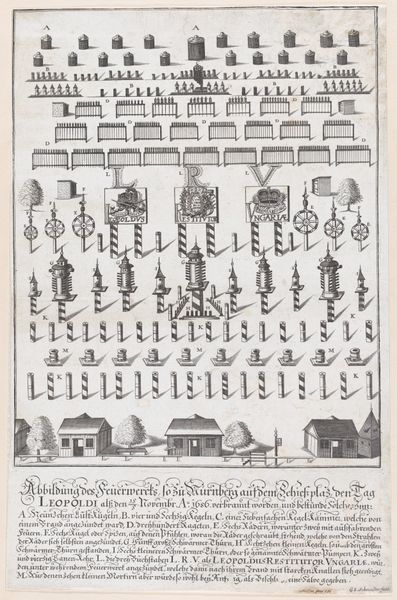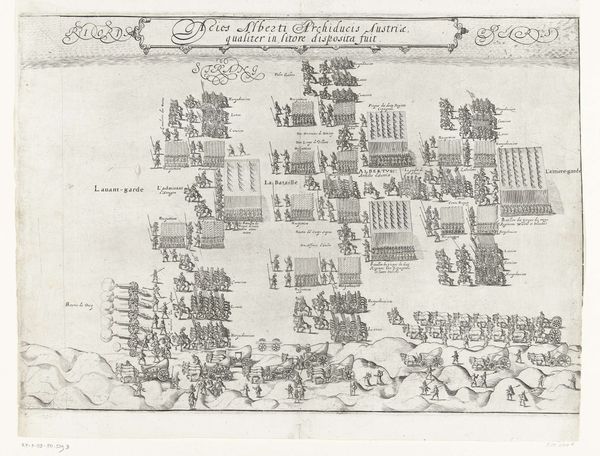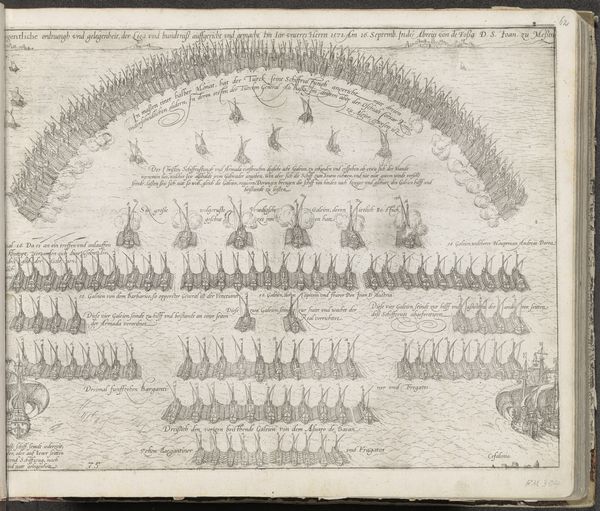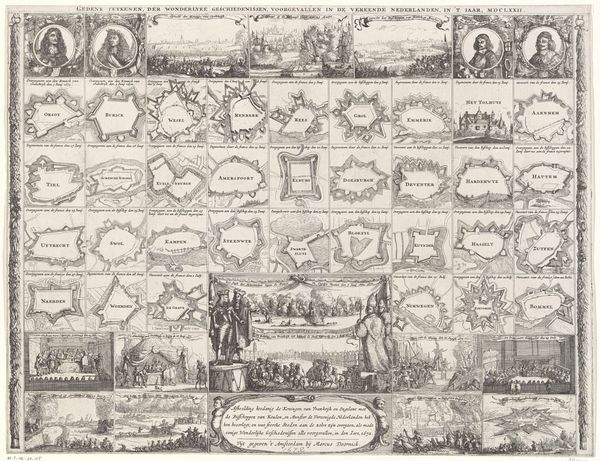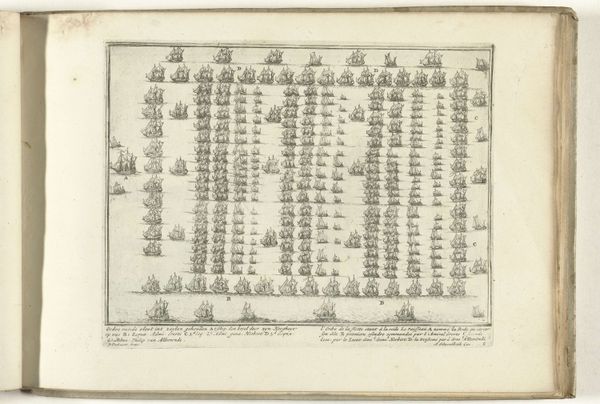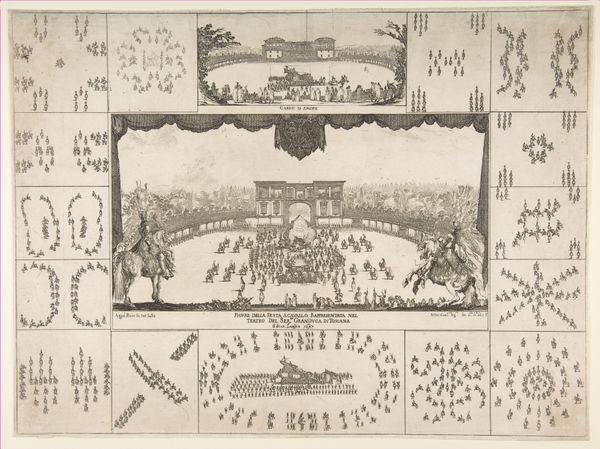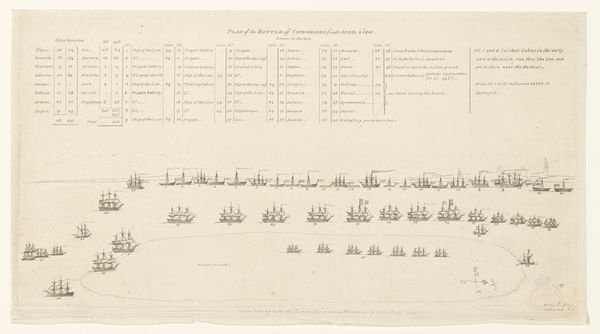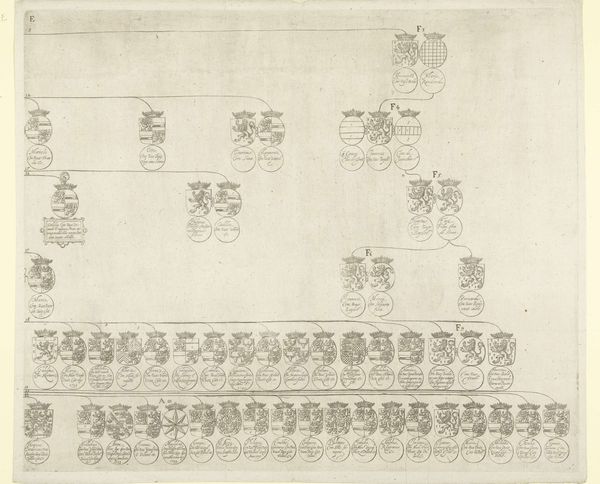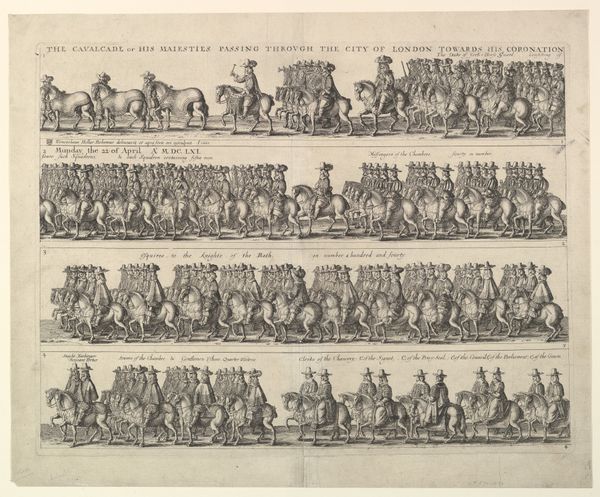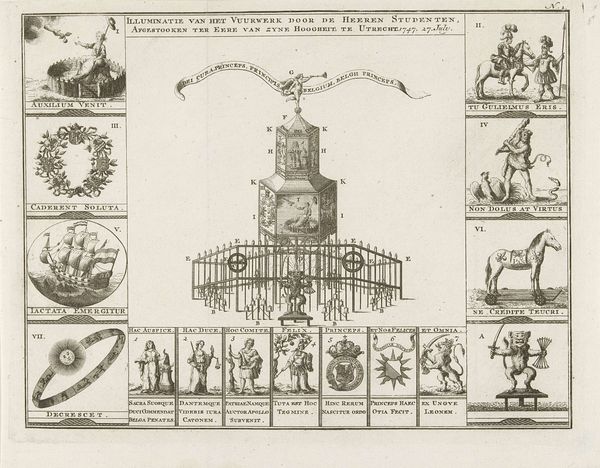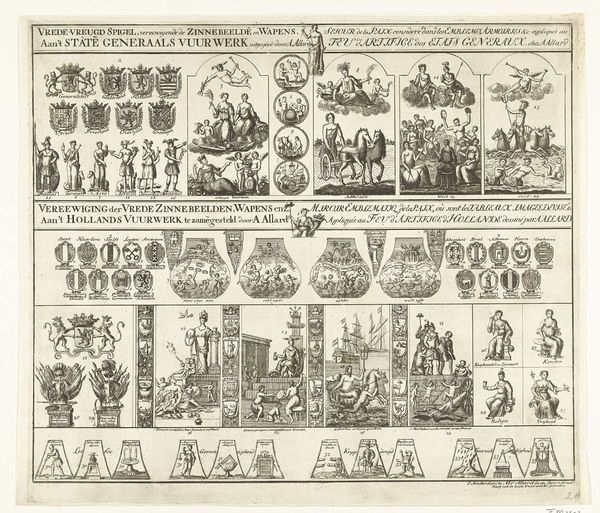
Formatie van de vloot waarmee Willem III naar Engeland is gevaren, 1688 1688
0:00
0:00
danielimarot
Rijksmuseum
print, engraving
#
dutch-golden-age
# print
#
cityscape
#
history-painting
#
engraving
Dimensions: height 380 mm, width 524 mm
Copyright: Rijks Museum: Open Domain
Editor: So, we’re looking at "Formatie van de vloot waarmee Willem III naar Engeland is gevaren, 1688" or "Formation of the fleet with which William III sailed to England, 1688," made in 1688 by Daniël Marot. It’s an engraving, which allows for this incredible detail depicting each ship. What's most striking to me is the sense of order amidst the potential chaos of a naval fleet. What do you make of it? Curator: What I see is a very deliberate act of image-making used for the construction of political legitimacy. This isn’t just a picture of ships; it's a statement. It visually organizes the fleet, yes, but it also presents an image of strength and order – qualities William III wished to associate with his invasion of England and subsequent claim to the throne during the Glorious Revolution. Consider how this image might have circulated; prints were relatively accessible, serving as propaganda reinforcing Dutch power and the legitimacy of William's claim. Who controlled the imagery, controlled in part the narrative. Does that change how you view it? Editor: Definitely! It reframes the engraving as a powerful form of political communication, designed to sway public opinion both at home and abroad. I’d previously overlooked that intentionality. Curator: Exactly. These kinds of images played a crucial role in shaping public perception of political events. We must question, whose perspective is represented, and to what end? Editor: It’s amazing how much historical context shapes our understanding of what initially appears to be just a picture of ships. I appreciate how that understanding adds layers to it. Curator: And hopefully provides insights on the power and politics embedded within visual representations!
Comments
No comments
Be the first to comment and join the conversation on the ultimate creative platform.
